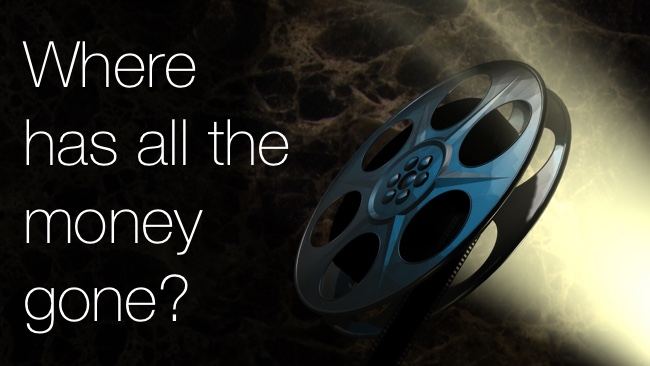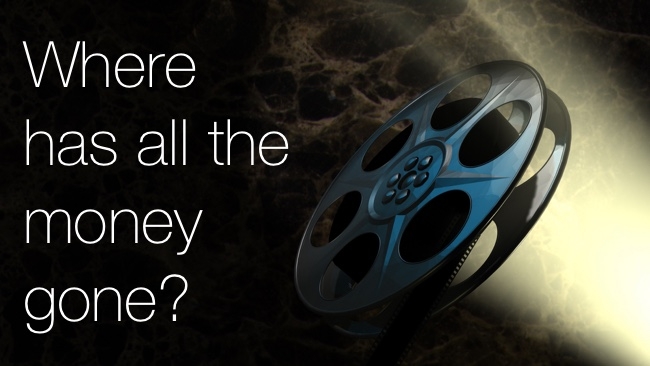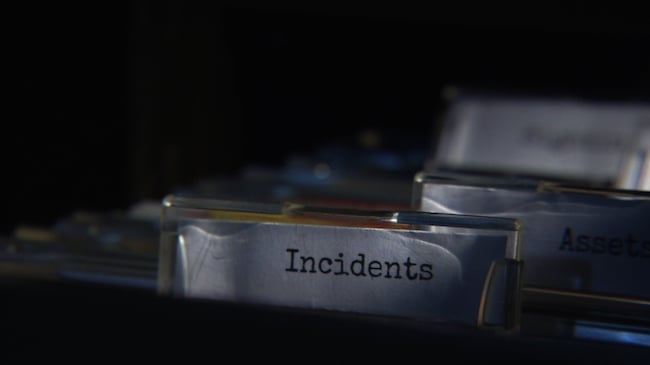

RedShark Replay: Once upon a time Roland Denning had a part in making a small, independent documentary film. Having jumped though all sorts of hoops and spent significant amounts of money to have it distributed online, he can now find it pirated and available for nothing to anyone who wants it on YouTube. Here he tells the story...
A generation has grown up expecting music, films and TV to be free. The download genie has not just come out of the bottle, it’s smashed that bottle into a thousand pieces. Unauthorised downloading of music and movies is no longer marginal - it’s the norm.
Behind this is, of course, a massive historical shift. We have moved from a world where information and entertainment was contained in physical objects, bought or rented, to one where content exists in computer files that can be copied and transmitted endlessly with no loss of information at virtually no cost. Cinema, which in its heyday offered an experience which simply could not exist elsewhere, now offers us a picture that is barely better than the HD screen in our home, yet seat prices have risen dramatically. The economic models we are working with are based on a radically different era; no wonder filmmakers struggle to find ways of getting paid for their films.
Online distribution was seen by many as way for filmmakers to compensate for falling DVD sales and cinema attendances and, importantly, support a much wider and richer range of films. What follows in my own experience of getting an independent film distributed.
Distributing Mirage Men
Mirage Men is an documentary feature I am credited with co-producing, co-directing and co-editing (officially it is ‘a film by’ John Lundberg, Mark Pilkington, Kypros Kyprianou and myself). A story of how the US military helped to create the UFO cult to obscure certain secret developments the public had stumbled upon, the film was well received at the Sheffield DocFest in 2013 and had its US premiere at FantasticFest in Austin, Texas later that year. Soon after that we got a sympathetic Sales Agent and, eventually. a US distribution deal.
All seemed to being going very well. The US distributors offered us a reasonable, if not massive, minimum guarantee, payable in instalments. They saw the main market for our film was transactional (pay-per-view) Video On Demand - they had already had a great success with another (but totally different) documentary that featured UFOs, taking $250k in the first 24 hours. This previous documentary was of the evangelical ‘aliens are among us, tell your friends!’ type - our was very different, a cold war story of misinformation and manipulation; altogether far more sceptical and ambiguous. I don’t think the distributors ever quite got this. Nor has any independent documentary since, as far as I know, got anything like that return through VOD.
As is standard practice in the USA, the distributors required E & O (Errors and Omissions) insurance - basically a cover to stop themselves being sued. This is relatively easy to buy, but first the film needs to be scrutinised by a lawyer. They also wanted a Title Search (which seems to amount to paying a lawyer to Google the title to make sure no one else has used it). All these are producers’, not distributors’, expenses and the bills came to thousands. Also required were audio transcripts, a post-production script and Closed Captions sub-titles (CCs are rare in the UK - in fact, I couldn’t find a company here to do them I ended up doing them myself - and that’s a whole other story). We were also asked to make a 60 minute TV version. All of this adds up to a considerable amount of labour in addition to the costs. None of this will come as a surprise to anyone with experience of feature distribution, but it may be news to those who think online distribution is simply a matter of uploading a file. Then there are the technical hurdles.
Time to transcode
Our finished film existed as a 1080 ProRes422HQ file at 25fps. The US distributors were happy with this, but they also wanted a 24fps file (24, of course, meaning 23.976). And a 24fps HDCam SR tape with 10 audio channels (this was way back in late 2013 and, even then, I was surprised they insisted on a tape copy). The audio channels contained a stereo mix, Dolby surround and separate M & E (music and effects) tracks.
Now there are two basic ways of transcoding a 25fps film to 24fps; the first is on a frame by frame basis, which preserves the integrity of the picture but means your film is around 5% slower and longer. You also need to do a pitch correction to the audio so it doesn’t sound slowed down and this can introduce unwanted audio artefacts. The second way is to use a standards convertor like an Alchemist or a Teranex to shift the frame rate but maintain the running time and speed. This preserves the audio intact but can introduce visual artefacts, but in the end, this was the route we chose, with satisfactory results. I don’t think I need to point out how all of these stages cost money, and for an independent, self-funded movie, those costs are significant.
If you get a reasonable minimum guarantee, you are resigned to the fact you are unlikely to get any more. The distributors deduct their marketing costs and production costs and, before that, the sub-distributors (like the companies who handle VOD and DVD), have deducted theirs. Once the minimum guarantee is paid off, the distributors also take a share of what is left - but, of course, it seldom gets to that stage. And the Sales Agent takes his cut of the money that is coming to you. At one point, we didn’t even think we were going to see all of the minimum guarantee; the distributors were ‘disappointed’ with the returns and the final payment was delayed by over 6 months. Like many other distributors who had invested their resources in VOD, they seemed to be in trouble.
Enter the pirates

So, the film is out there. In the US it is on Netflix, iTunes, Amazon and available on DVD.
But, in advance of that, Mirage Men turned up on YouTube. I don’t know where the original copy came from - maybe from a DVD sent out to film festivals and potential distributors. YouTube will take down any material which is in contravention of copyright, and they usually do so within 24 hours, but it becomes a cat and mouse game - someone puts it up, we send a take-down notice. And often it is not easy to find your own work as an uploader has hidden it under a different title.
As I’m writing these words one of my colleagues tells me he has just found yet more links to our film (under a different title) on YouTube. Between them, just two links have enabled over 70,000 free, unauthorised viewings. There’s another forty or so links to our film with smaller viewing figures. And of course, this is just YouTube - I can’t even guess how many torrents are out there in the wild.
There is something galling about the expense and time it takes to get a film accepted for distribution against the ease at which someone can upload it and offer it to the world for free. To go from a finished film to a file package that the distributors would accept cost thousands of pounds; to have just uploaded to YouTube would have cost nothing.
And I can’t blame people for watching something for free on YouTube, but there is some strange zeal from the uploaders as if they are on a mission to fight against the evil corporate producers. When you are still out of pocket on a film you have put years of your life into, it doesn’t quite feel like that.
The problem with VOD is that there are just so many competing systems - many only existing via computer and not integrated into TV delivery - it is a nightmare for the consumer. The ones that offer the best returns to filmmakers (like Vimeo Pro) are the least accessible to the viewer - but that’s the start of a whole other discussion.
Retained rights
We retained UK rights and, as well as VOD, put out a double DVD with extra material and an 8 page booklet for what we consider is a very reasonable £10. At least with the DVD, we sell it directly (via Amazon and our own website) so everything it makes, we keep. A few years ago, DVD would have been the key distribution mechanism for our film, but of course, DVD is a medium in terminal decline and Blu-ray has not really taken its place. (It’s interesting that Apple never put Blu-ray drives in their computers - they saw it as a retrograde form. I happen to like Blu-ray - still the best way to view HD at home - but it remains a small, niche market).
TV sales? We’ve had a few, but with a specialist product in a fragmented market, you’d be surprised at just how low prices are. Even before a Sales Agent’s commission.
Theatrical release? We’ve done a few screenings in specialist venues, which were very successful, but a ‘proper’ cinema release is something else. Ideally, you want a good distributor to get behind your film but the market for feature documentaries, despite the brief boom a couple of years ago, is small; the theatrical distributors who specialise in documentaries concentrate their resources on one or two a year. Yes, you can try and do it yourself but, once again, there are a few hurdles to jump through. You need to get a DCP (Digital Cinema Package), you need a BBFC certificate, you need to hire a screening room to show to the press, you need a marketing budget. All that costs several thousand and, although it’s not impossible to recover the costs, you’re much more likely to be in the red.
In recent years, a cinema release was seen as a marketing device for money that was to be returned through DVD sales but, with the decline of the DVD market, it’s not quite clear to me what it is a marketing device for.
Many will say that the fears of pirating and filesharing are unfounded - the TV and film industries are still very healthy. In many ways this is true - live TV, whether it is sport or live entertainment like the ‘X-Factor’ still draws massive audiences and faces little threat from downloaders. High quality TV drama series, the mainstay of any paid-for TV service, are thriving and there is a big demand for low-cost factual entertainment to fill up the many schedules. It’s the middle ground that is under threat - any documentary that falls outside the mainstream entertainment category, independent drama features, all that interesting, diverse stuff between the prestige high-end and the dirt cheap, between HBO and YouTube.
Just like in music, it is far cheaper and easier than its ever been to produce and distribute work, but harder than ever to get a financial return from it. As media diversifies, a few celebrity brands flourish while everyone else just gets by.
My real concern is that in a unfettered free-for-all future, it is the big, established interests who will win. If films and music are all delivered for free, financing will come through product placement, data gathering, sponsorship and merchandising. This will work for established brands but everything else will become marginalised. The new technologies which we looked forward to enabling a much wider and more exciting range could end up having the reverse effect.
Courses of action
So what can we do? Arresting or threatening people who illegally fileshare is not the way to go - to borrow a concept from another underground trade, I believe we should attempt to clamp down on the dealers, the pirate sites, but decriminalise possession for personal use. Yes, we will never eliminate the pirates completely, but we can do our best make their trade a lot more difficult to maintain, blocking their sites as best we can. Whatever restrictions are imposed, someone will hack them, but many are willing to pay a reasonable fee for a well-organised, efficient service that avoids any hassle.
Crucially. the legal experience has got to be easier and better than the illegal one. This is not generally the case and where it is - Netflix is a good example - legal methods can flourish. But, frankly, Netflix aside, once you’ve got the hang of it, often the easiest way to find a TV episode or a movie is to Google the torrent. This is not good.
It is widely accepted that the music industry made a disastrous error by seeing the internet as a threat rather than a way of increasing income and, when they did see the light, it was far too late. Although iTunes and other digital services helped reverse that trend, it was too late for the music industry to recover. Recorded music is now basically a marketing tool for where the money is - live performance; it used to be the other way round. Unfortunately, for filmmakers, there’s not much interest in live gigs; I’ve done a few Q and A sessions but it’s never really been a hot ticket.
Not long ago, with a decline in DVD sales and cinema attendances, Video On Demand seemed like the answer to many prayers and the hope was that it would open up new possibilities for independent production. As we've seen, though, the story is not quite as simple as that.
Roland Denning is a filmmaker and writer based in London
Tags: Production


Comments